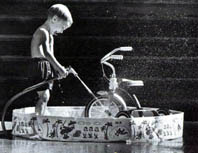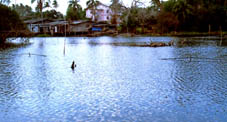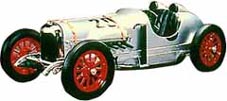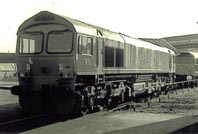|
Family Money: How Much Can You Take Out? (Part 1)
Snap Shots: Phamily Photographs!
Think too, about getting the older folk to sit down. Comfortable garden chairs are good, but place them together and slightly facing each other. You do not want the “sit up straight” school pictures look with 75 year old grand-parents. And you get down to their level too, so that’s a third garden seat. Move in close, let them fill the frame and see if you haven’t got a beauty out of the next roll of film.
Modern Medicine: Hyperlipidaemia or Fat Facts!
It is very easy to get these kinds of positions. First off you will have to learn how to spell, although Hillary admits she does get letters from some “queeries” from time to time! Secondly, when you know all the answers and don’t have to ask me for them, then you are qualified. Lots of luck!
Dining Out: Hill Beach Kitchen - Where’s That?
Never let it be said that the Dining Out Team is not adventurous. We are prepared to climb mountains, scale cliffs and go abseiling to find new and different places for you to eat. And this week, we did just that.
This project has recently been taken over by new owners and is in the process of total renovations. Part of that is a new restaurant, built right on that private beach called, not surprisingly, the Hill Beach Kitchen. To get to the Hill Beach Kitchen it is a case of going through the new Bamboo Garden area and down the series of steps to arrive on the beach. There you will find straw thatched bamboo table units, padded bamboo chairs and the gentle sounds of lapping water. Cooling breezes from the sea. The spot is idyllic. The restaurant area is “homey”; make no mistake, this is not designed as five star fine dining. The target population is the expat community, Mums and Dads with kids. The menu also shows the planned direction, being very reasonably priced. Opening at 7.00 a.m. and running through till 11.00 p.m. the menu begins with five breakfast items, with the ABF being the most expensive at 70 baht. Four soups, including pork or chicken congee are 50 baht and then into the Thai menu proper. These run in price from 60 baht (sweet and sours, stir-fries) through to deep fried or steamed fish at 150 baht. Five salads between 50 - 70 baht finish the Thai side. There is also the Western food section with schnitzels (120 baht), fish and chips (100 baht), sandwiches around 60 baht and hamburger and french-fries at 80 baht. Page 3 of the colourful menu includes more Thai items ranging in price between 80 - 200 baht, then snacks, further steaks and Euro items, then rice and noodles at around 50 baht. The final pages cover drinks with cocktails at around 120 baht, and beers 50 - 60 baht (but no Singha Gold!). We let our host, Wolf, choose the items for our dinner and very quickly some fried rice, sweet and sour seafood combination, curried prawns and a deep fried fish were delivered to the table. The rice was the first surprise. Light and fluffy with sweet corn kernels through it, really one of the nicest fried rice dishes we have had for some time. Madame, in fact, said it was THE best. The sweet and sour was neither too sweet nor too sour, and the seafood was not overcooked or rubbery. The curried prawns were of a good size, but were done in Thai style with the shells left on. Personally I find it a little difficult to de-shell prawns at the table with just fork and spoon, and that evening was no exception! I also realise that many people eat the shells and all, but not for me. The actual curry flavour was excellent, not hot, just a hint of probably a Malaysian curry. The whole fish was very well prepared and the white meat set off the sweet and sour very well. As a middle priced restaurant, the Hill Beach Kitchen represents excellent value. The venue is sensational and the atmosphere inviting you to just sit back and relax. We did our dining out session in the week leading up to the opening, so it will be interesting to see if the chefs can maintain the same high standard when things get busier - which they will. It is definitely worth the effort. One small item to pack is some mosquito cream, but Hill Beach Kitchen will supply some on request.
Animal Crackers: Reader’s Tale - My Peke Pippen by Mirin MacCarthy A recent cleanup in my garage uncovered a dusty old cardboard box that had a pile of old black and white photographs inside it. One small photograph was that of my very first dog. He was Pippen, a fluffy Pekinese, a breed that acted as “body guards” for the Chinese emperor. Peke’s have big bulbous eyes with flat, pushed in
noses, giving the impression that they are in the habit of chasing parked
cars. Pippen loved to travel in the car. He would either stand on your lap,
his head out of the window with his ears flapping back in the breeze or, he
would lie on the rear parcel rack under the rear window, watching the world
go past. My aunt owned a property in the country in Australia and I would spend my holidays there with the family and Pippen. Country life was a whole new adventure for him. The adventure almost ended in tragedy for Pippen when one day he came face to face with a brown snake. This venomous snake had made its home in a dead tree within the inner boundary of the property. There was an immediate confrontation between the two of them. I showed my true colours by dashing into the house to get help and then cowering behind a table whilst the adults tried to rescue the dog. The snake retreated and Pippen had to be restrained from continuing the attack. Perhaps he was momentarily possessed by his ancestors’ “guard dog” instincts, but he alerted us to the presence of the snake and possibly prevented a member of my family from being bitten. His fighting heritage came to the fore once more when he escaped from the residential boundary and charged into a herd of cattle. The cows stampeded in every direction, running with udders slapping against their underbellies as my wild eyed pet snapped at their hoofs. The town bull had a different attitude to that of the cows. It held its’ ground and turned to face Pippen, its sharp horns lowered for attack. I performed my usual brave feat and ran to the house for help. My uncle took up the challenge and bolted out to the rescue. Pippen had managed to get the bull cornered against the fence and the bull was preparing to defend itself in what could only be a show of aggression. My uncle executed the best flying tackle I had ever seen or have ever seen on any football field since that day. Pippen’s reign of terror was brought to a shuddering end with uncle and dog raising a huge cloud of dust as both tumbled along the ground. Dog was unceremoniously returned to the inner enclosure, gate was firmly locked and I was subjected to a lecture on how not to leave the gate open in future. Pippen lived on for a long and happy life. He certainly made my early life most enjoyable. No doubt he is now somewhere up there in doggy heaven having a wonderful time leaving puddles on clouds.
Shaman’s Rattle: Ngoo Yai - the beast from Banglamung?
A few weeks ago we looked at the incidence of strange “prehistoric” animals still being seen today. Some of these creatures have been seen for hundreds of years such as Ogopogo, the large snake-like creature in Lake Okanagan in British Columbia, Canada and Mokele-Mbembe who likes the warmer weather and lives in Lake Tele in the Congo. Would you like to hear about Ngoo Yai, the snake-like beast from Banglamung? This one is certainly close to home and is well known by the villagers who have seen and been told of this creature by their elders. Ngoo Yai is held in such esteem, that he is not spoken about to outsiders, as the villagers believe that Ngoo Yai is a good luck omen.
Before we reveal Ngoo Yai’s location, a little of the heritage needs to be understood, which will explain much about this creature. For many eons, the snake has been credited with magical powers. The snake has an important place in human cultures all over the world, from the staff of the Greek Aesculapius (the father of medicine), the caduceus with its encircling snakes, to the all seeing snakes of Persian legend. One of the most famous snakes in mythology was Quetzalcoatl, the mythical “plumed serpent,” that was worshipped as the “Master of Life” by ancient Aztecs of Central America. Some African cultures worshipped rock pythons and considered the killing of one to be a serious crime. In Australia, the Aborigines associated a giant rainbow serpent with the creation of life, similar to the Aztec belief. In India, cobras were regarded as reincarnations of important people and are called Nagas, hence the cult of cobras mesmerised by the bamboo flute players in bed sheets in Indian markets. Mind you, there are negative aspects in all the snake myths too. The serpent in the Garden of Eden did not cover itself in glory, and contributed in no small way to the dislike of snakes in the Judeo-Christian culture. St. Patrick chasing all the snakes out of Ireland is a continuation of this belief. (It is also said that they then went to America and became policemen!) In ancient Rome, if the sacred snake in the temple did not take food from a vestal virgin, it was considered that the poor women had been de-flowered and she was promptly executed. Another good reason to stay away from both snakes and virgins. However, in the local scene, snakes and snake worship is long entrenched in the colourful history. The Indians, Burmese and Siamese all worshiped the snake as a demon who also had good aspects. Primitive Hindu snake cults were incorporated into the worship of Vishnu. Krishna attained the genius of the snake in his representations. Buddhist legends relate the Buddha was given the true Buddhism by the “King of the Serpents”, and Buddhists also revere the regenerative powers the snake exhibits. And let us not forget the practice of drinking cobra’s blood, a virility drink said to be the equivalent of Viagra. (Me? I’ll just take the tablets, thank you.) With all that folk-lore behind the snakes in Asia, you can start to understand why a “super snake” like Ngoo Yai would be kept within the village people’s collective fables, and its presence kept a secret, especially from foreigners and intruders. If Ngoo Yai was indeed a demon, then they all wanted to keep it happy and contented. In the village close to Ngoo Yai’s habitat, some houses still remain with a stone shrine to Ngoo Yai in the far corner of the dirt allotment. In fact houses were transferred with documents mentioning the family serpent shrine as an important part of the sale! While records do not go back too far, the village Kamnan (chief) claims that Ngoo Yai has been seen for over three centuries. This is a creature that is reported as being 15 metres in length and equally at home in marshy land or even in the swamp itself. So where is this beast living? Off Sukhumvit Road, opposite and just past Lotus, there is a deep swamp. Until 20 years ago, this was on the edge of a small village, but with the construction of the road and buildings, the villagers have all left. However Ngoo Yai has not. On any day you will see men swimming in this region. This is not, as most assume, locals fishing for eels. These are locals communing with Ngoo Yai. To be lucky enough to touch the huge serpent will endow a man with great fortune and virility. Two important qualities even today. You can ask these people what they are doing, but they will not tell you. Ngoo Yai is not to be trifled with, and the legend does say that Ngoo Yai should not be threatened in any way, or disasters might happen to the local people. So that is the tale of our own, perhaps prehistoric, beast. Next time you are passing Lotus say a little mantra to Ngoo Yai. It could be good insurance!
Auto Mania: Honda S 2000 - an Australian experience
While the Honda S 2000 is being given rave reviews all over the world, I tend to regard other motor noter’s work with suspicion. However, one journalist not given to hyperbole is John Weinthal, voted the Motoring Journalist of the Year in Australia last year. John is himself a regular reader of Automania (even sending in some Autotrivia Quiz questions from time to time), and sent over his report on the S 2000. I present it here in its entirety. “The first open Honda I drove had an all alloy 600cc,
four cylinder engine which ran out of puff at about 11,000 revs. Among its
many unusual features was that it was chain driven. That was the early
’60s S600. This was followed by a more conventionally driven Honda S800,
using the same ultra-compact convertible body as the 600. Now we have the S2000 which is every bit as impressive a piece of technology today as were the ’60s originals in their time. This aggressively styled strict two seater is as true a sports car as they come, with most of the comfort features we expect on more conventional new cars - certainly those at around its $70,000 price. (In Thailand it looks as if this car will retail at around 4 million baht.) About all that’s missing from the Australian model is cruise control, a more than adequate sound system and a glovebox. No great penalty, apart perhaps from the disappointing noise boxes - radio, six-stack CD and tape. But the system almost makes up for this with the most practical driver’s right hand controls I’ve seen, in addition to the usual control panel behind a centre-dash cover. Standard gear includes ABS brakes, two air bags, sturdy roll over bars, aluminium bonnet, 50/50 front and rear weight distribution, limited slip diff, air conditioning, electric windows and mirrors, alloy wheels, low profile tyres, and remote locking with an immobiliser. While clearly the engineers and sports departments at Honda had the majority say in designing the S2000, it was also driven by real world folk who won’t put up with any inconveniences just because its primary allure is so different from everyday cars. The normally aspirated 2 litre engine is the world’s most powerful in terms of kW per litre - a whopping 176kW in a 1260 kg lightweight. It has a terrific short throw six-speed gearbox, and at the 9000 rpm redline in any gear, the exhaust note is quite awesome. The car can hit 100 kph from rest in 6.2 seconds. Top sped is 240 kph. But even these impressive numbers miss the point. This car handles, stops and steers with great accuracy and driver communication. It never rattles or squeaks, even over some of the most challenging dirt tracks I know in far north eastern New South Wales (Australia). I know of no more solid feeling convertible. But what makes this the most ownable of convertibles is the hood operation. Two simple clips to unfold, a button to press and you’re fully open or closed in a remarkable six seconds. This makes it a true no-compromise everyday car, with none of the hang-ups of all other drop-heads in my experience. It’s simply stunning. The magazines have raved and for once they are right. What they haven’t said is that it’s probably the only convertible, this side of a Porsche, which could really stand the punishment of everyday country road driving, including the rough Aussie red dirt. I think I need one.” Thanks, John for your up to the minute assessment. John is actually visiting Pattaya in 5 weeks after covering the Bangkok International Motor Show for the Australian Press (March 31 through to 9th April) and I will also be up in Bangers for the event and will keep you posted about any new developments. Autotrivia Quiz Last week I asked about the 7 connections between the French Rosengart, the German Dixi and the Reliant 3 wheelers. OK, it was a bit of a trick question - the 7 connection was the Austin 7. These little fizz bombs were produced, under license, in France as the Rosengart and in Germany by BMW as the Dixi. The connection to the Reliant 3 wheelers was that even up till 1962 the Reliant people used the Austin 7 engine in the 3 wheeled contraptions. That was about a 40 year span for those engines, not bad. The 1949 Austin A40 engines were also very long lived, eventually ending up in the Datsun Bluebirds in the 60s. Similarly the Morris Oxford powered the Hindustan Ambassadors in India for many years after the poor old Morry died in the UK. These days, of course, the Hindustan Ambassador still sports the Morry body, but the lump under the lid has been replaced with a Japan sourced 2 litre for blistering (?) performance. And so to this week. Look at the photo, this race car features an offset Ford V8 with supercharging, extra side mounted radiators to cope with the cooling and was built by a very famous designer of piston rings. The constructor held a national speed record for 20 years in one of these. His first name starts with the letter S. Who was it? First correct answer to be faxed to 427 596 or emailed to [email protected] wins this week’s Free Beer. Eff Wun hots up With only three weeks to go before the first race of the season in Australia, the F1 circus is getting busy. Not only do they still have to do their testing of the new cars and components, and in some cases get some track time into their new drivers, but they also have to get the logistics staff into action. These unsung heroes are the ones who actually get the whole kit and caboodle to the race meetings. And the task is a nightmare. Imagine, you have to get three race cars loaded and strapped onto pallets, a complete inventory of spares, including probably four engines, several wheels and tyres and refuelling rigs in time to catch the F1 transport plane. In the meantime, the race engineers are saying the cars are not ready yet, testing is still going on and mechanics are falling over themselves screwing new bits on the chassis. If that’s not enough, you have to have cooks, canteen equipment and food for the complete crew, which is probably around 50 people. No, Formula 1 is not a case of running the race car on the back of a lorry and unloading it with your mate and his girlfriend at the circuit. It is a very serious business.
The origins of the Foster Yeoman Company go back to 1923; their quarrying activities at that stage were quite modest, and were to continue thus until a new quarry site in Somerset was bought. This was the period of rapid motorway construction all over Britain and the requirement for stone was now huge; to transport it by road would have been almost impossible and a very bad move, and Foster Yeoman therefore took advice from Ken Paynter, then Assistant Divisional Manager for British Rail at Bristol and a movement plan was set out to cope with the ever increasing traffic, finally centred on Merehead Quarry, to be opened by Sir Henry Johnson, then Chairman of the British Railways board on 1 June 1970. It has developed very much since that day. At one stage over 1350 British Rail wagons of various types were used, but due to their limited maximum speed they were not too suitable. Moreover, the reliability of most British Rail diesel locomotives was not good, the ‘heavy haul’ Classes 56 and 58 being especially poor - and from their power point of view they ought to have been the first choice! Further discussions with British Rail top management led to the suggestion that Foster Yeoman should purchase their own fleet of diesel-electric locomotives, able to conform with company’s requirements for power and reliability. This was a most remarkable proposition and it did not seem that the railway would agree. Eventually they did so, and the plan for the movement of four million tonnes of stone in the wagons then being used, and to have a proven reliability of 95%. There was absolutely nothing like this available in Britain. The company had already bought one locomotive from the USA, for internal movement in their sidings. They had intended to have two but the builders, the Electro-Motive Division of General Motors (EMD), at La Grange, Illinois, assured them that they could cover all the work with just one. They bought one and it has been in regular use ever since. There was still resistance from the railway against the use of privately-owned locomotives on their lines, with also the closure of a number of British locomotive building companies, but there was also the prospect of a 15 year contract for the movement of 4.5 million tonnes of material a year. Plainly British Rail did not want to lose this, although it is hard to see who else could have handled traffic of this volume in any sensible way.
It was ascertained by the company that EMD could indeed produce a suitable locomotive for the work, and through 1984 British Rail, Foster Yeoman and EMD were in long negotiations over the design. It had to fit in with British height and width restrictions, the driver’s cab and controls were to conform with local practice, and in particular, special control of exhaust noise (which doesn’t seem to worry Americans) was to be very rigid indeed. They also were to incorporate EMD’s latest feature, the ‘Super Series Creep’ control, expected to enable the locomotive to haul trains of up to 4,300 tonnes, far more than ever before in Britain hauled by a single locomotive. This enabled the order to be kept down to just four locomotives.
A 16-cylinder two-stroke turbocharged power unit of 3,300 h.p. was installed, identical to that used in the very successful SD40-2 locomotives delivered to number of American Railroads. The two bogies and their transition motors were also scaled down from this design, but at the builder’s recommendation a more robust alternator was fitted. The ‘Creep’ control is not simple to explain, but is based on the fact that at very low speeds an appreciable increase in tractive effort is obtained if the wheels are rotating at a speed slightly in excess of that called for by the road speed. The amount of slip needs careful monitoring of control, done by ‘Doppler Radar’. I can supply some more data on this to those interested, if they contact me at PO Box 97 Pattaya 20260, with two 10 baht stamps to cover my costs. Although many EMD parts are included, these locomotives are far from a standard product, and so were handled as a very special order. The requirement of delivery within one year, as well as that of 95% availability, were written into the contract, and EMD had deposited a very large sum in a British Bank, all of which they stood to lose if either or both clauses were not fulfilled. All the locomotives arrived by sea at Southampton Docks in January 1986; first they were taken to Merehead, thence to Derby for British Rail examination and testing. Load tests were carried out from Merehead, and included the steep Savernake Bank, as steep as any they would traverse in normal service. A disappointing result was seen here, the ‘Doppler Radar’ being found to be wrongly calibrated, but this was righted and it was found that a remarkable 5,100 tonnes could be moved. Staff training, both for drivers and maintenance staff, was carried out in close co-operation with EMD representatives, but it was a little time before full use could be made of the new locomotives, until enough drivers were familiar with them. In 1989, the four locomotives carried out the following work: 1,589 trips, covering 308,287 miles (496,342 kms) and 2,316,525 tonnes of material were moved. During this year a fifth locomotive was delivered. Availability was 96.6% - EMD’s confidence was justified and its money was safe! Another Company, Associated Roadstone, owns quarries in Somerset, and they too bought four Class 59 locomotives, and they and Foster Yeoman now work combined trains of both firms’ products with a locomotive from either. A movement of coal from a colliery of the North East of England is now worked by Class 59s. Before moving to Pattaya I had a small apartment alongside the main line to the West, where all the windows looked out on the railway. I recall seeing the first Class 59 running down to Merehead for the first time, in its striking blue and silver livery; soon they were a daily sight, but there was one train I seldom saw, as it left Merehead at 1.54 a.m. and was due to pass my bedroom window at 5 a.m.! But it used to wake me, not the locomotive, which was very quiet, but the heavy train of 102 tonne wagons, which would gently rock the old house in which my apartment was located! The 59s are certainly quiet!
Coins of the Realm: A unique Roman gold medallion by Jan Olav
Amalid, One of the most famous hoards of Roman coins is the Arras hoard. Found in Arras in the suburb of Beaurains in France on the 21st of September in 1922, the hoard was not the largest in quantity to be found, only about 200 to 300 coins, but what made it famous were the 40 Roman gold medallions it had.
Some of the medals were included in the collection of the famous Chicago brewer Virgil Brand and have come on the market after his death. Many of the medals disappeared from the market. In 1990 one of these unique medallions was offered at a Sotheby’s auction in New York. The medallion, which was a part of the collection of American oil billionaire Nelson Bunker Hunt, was a 9 solidus of Constantine the Great. Minted in 310 AD, it weighed 40 grams. My partner, Gunner Thesen, went to New York to buy this coin on behalf of a Norwegian collector. After strong bidding, Gunnar finally was able to purchase the coin for US$231,000, then a record price for such a coin.
In 1996, the Norwegian collector decided to sell his collection and contacted our company, Oslo Mynthandel, for assistance in consigning his large collection to a major foreign auction house. Our response was that we knew where his collection could be sold for a good price, but my partner Gunnar had a client for his Constantine the Great medallion. He offered him US$350,000, but the offer was turned down. The argument was that when a Norwegian coin dealer could pay this much, the collector was sure someone abroad could pay more. We agreed the collection should be sold at an auction-sale in Zurich. The collector and Gunnar traveled together to the Swiss auction, which was attended by the world’s leading collectors and dealers of ancient coins. They were sitting next to each other in the auction room, and when the gold medallion was put on the block, there was an intense silence in the room. After strong bidding against an Italian collector, Gunnar secured the coin for a new client for US$ 341,000. The new owner got the coin cheaper than he expected, and the old owner got paid less than he hoped for. Sometimes it is good to secure a profit. Anyway, last year the new owner got an offer from an American dealer of US$600,000 for the medallion. The offer was turned down. Only the future will show if this was a wise decision.
by David
Garred G’Day Pattaya, Fitness Tips this week takes a different path than originally planned. I have some recent research that dishes out a serious bashing to a couple of very popular diets (there is that dirty word again). However, one of my industry journals has revealed a recipe that combines two of the greatest styles of cooking on the planet and you would hate me for depriving you of this. Demanding work and training schedules as well as other commitments often overtake the time to prepare nutritious meals. The Australian Institute of Sport, in partnership with Nestle, has written a cookbook to help athletes and people who want to get themselves in shape fast and healthily to cope in the kitchen. The Survival for the Fittest cookbook has been written by the Department of Sports Nutrition, which in headed by Doctor Louise Bourke at the AIS. Dr. Bourke and the AIS team are ultimately responsible for the food intake of such athletes as the Australian Wallabies Rugby Union Team, the Australian Cricket team and the rest of the current world champion Australian teams. The exact figure escapes me right now but I do know that Australia is the Current World Champion Nation in over 14 sports. Now stop thinking that I am rubbing all you non-Aussies noses in it. The reason that I brought up such a statistic is to try to help you understand that the energy that these athletes are competing on is the very best. Don’t you deserve the very best also? The recipes chosen in this book were developed from AIS recipes and each contain high energy value, the correct balance of carbohydrate, protein and fat content for optimal training / nutritional results. Survival for the Fittest (AUS $ 20.00) is available in newsagencies throughout Australia and for those of us who don’t have contacts there try Amazon.com Doesn’t this sound great? Mexican Chicken Lasagna Spray of Canola or a couple of drops of olive oil Preheat oven to moderate (180C or 350F). Spray a non-stick frying pan with oil and heat. Cook the chicken over high heat for about 5 minutes or until brown, using wooden spoon to break up the lumps. Add the capsicum, chili, beans, pasta sauce and tomatoes and stir to combine. Spray the base of a large lasagna dish lightly with oil. Cut the pasta sheets to size and arrange a layer of pasta over the base of the dish. Top with a thin layer of sauce. Continue layering the pasta and sauce finishing with a layer of pasta. Spread the ricotta over the pasta and sprinkle with the grated cheese. Bake for 30 minutes or until the lasagna begins to brown at the edges. Allow to stand for 5 minutes before cutting into squares to serve. Serves 4 adults Nutritional information per serve: Enjoy
Copyright 2000 Pattaya Mail Publishing Co.Ltd. |
|
 Certainly,
it is good to have a record, “Did I really look like that when I was
17?”, but there is certainly room in the album for some “good”
shots, rather than just recording growth and aging.
Certainly,
it is good to have a record, “Did I really look like that when I was
17?”, but there is certainly room in the album for some “good”
shots, rather than just recording growth and aging. Dear
Hillary,
Dear
Hillary, There
has been quite some work carried out on that area east from the Royal Cliff
Beach Resort. Down where Soi Asia Pattaya Hotel runs to the water. Down where a
little known, and totally secluded small hotel has its own private beach. Yes,
private beach front and it is called the Hill Beach Hotel.
There
has been quite some work carried out on that area east from the Royal Cliff
Beach Resort. Down where Soi Asia Pattaya Hotel runs to the water. Down where a
little known, and totally secluded small hotel has its own private beach. Yes,
private beach front and it is called the Hill Beach Hotel.
 It
has only been recently that some of the local people have been prepared to
admit that he lives within their native stories, but is he still seen today!
And lives under our very noses.
It
has only been recently that some of the local people have been prepared to
admit that he lives within their native stories, but is he still seen today!
And lives under our very noses.

 A
brand-new Class 59, No.59 103, for associated Roadstone Corporation, on
exhibition at an ‘Open Day’ at old Oak Common locomotive depot in West
London, on 17th August. 1991.
A
brand-new Class 59, No.59 103, for associated Roadstone Corporation, on
exhibition at an ‘Open Day’ at old Oak Common locomotive depot in West
London, on 17th August. 1991. Foster
Yeoman Class 59 locomotive No. 59 003, approaching Reading Station, on a
train of empty wagons for Merehead Quarry, in June 1988.
Foster
Yeoman Class 59 locomotive No. 59 003, approaching Reading Station, on a
train of empty wagons for Merehead Quarry, in June 1988. Rumors
are that two of the Roman gold medallions weighed more than a kilo, but they
have probably been melted down. The coins and medals that were left were
divided between the town of Arras and the owner of the land. The town of
Arras also bought the finders’ share. The French numismatic company E.
Bourgey later bought the find-owners’ share.
Rumors
are that two of the Roman gold medallions weighed more than a kilo, but they
have probably been melted down. The coins and medals that were left were
divided between the town of Arras and the owner of the land. The town of
Arras also bought the finders’ share. The French numismatic company E.
Bourgey later bought the find-owners’ share. Gunnar
Thesen of Oslo Mynthandel, Norway shows the catalogue with the Constantine
The Great (307-337) Medallion of 9 solidi, which was auctioned off for US$
341.000.
Gunnar
Thesen of Oslo Mynthandel, Norway shows the catalogue with the Constantine
The Great (307-337) Medallion of 9 solidi, which was auctioned off for US$
341.000.